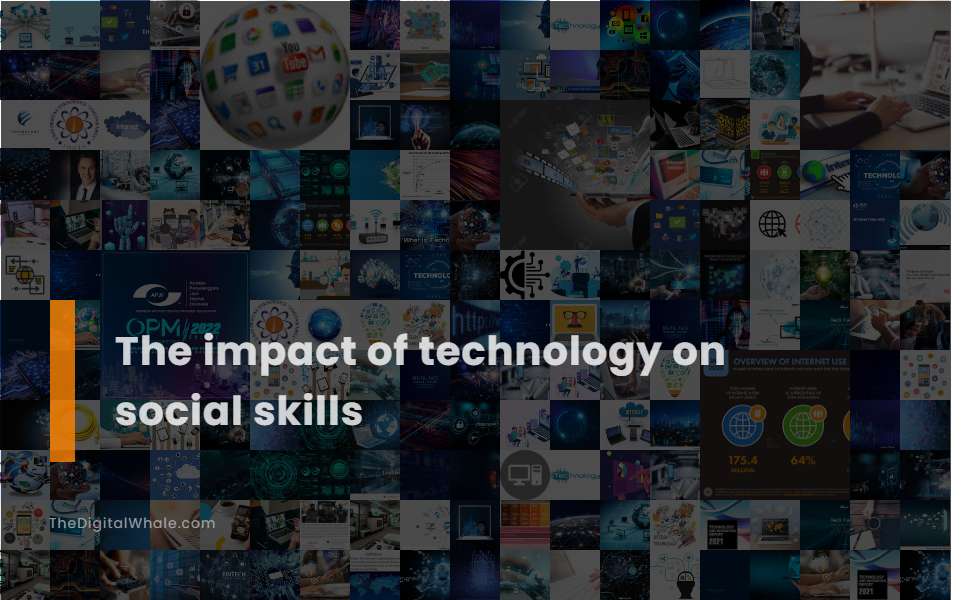The Impact of Technology On Social Skills
How can technology reduce social skills? What are some specific ways in which technology has had an impact on social interaction? Let's find out more about The Impact of Technology On Social Skills.

Enhances global connections and cultural competency
Technology enhances global connections and cultural competency by enabling people to connect with others across geographical boundaries, exposing them to diverse viewpoints, and fostering critical thinking, empathy, and effective communication skills. It facilitates instant global communication, breaking down distance barriers and allowing people to form emotional connections worldwide. This capability is particularly beneficial for building relationships and understanding different cultures. To explore further about the impact of technology on social skills, the insights provided by Grouport Therapy are invaluable. These advancements in communication technology continue to redefine how individuals and societies interact.
Facilitates professional networking and career opportunities
Technology significantly facilitates professional networking and career opportunities by providing platforms such as tech meetups, conferences, and social media. These platforms enable professionals to build relationships, share knowledge, and access new opportunities, thereby enhancing career growth and innovation in the tech industry. For more insights into how these platforms play a critical role in navigating tech innovation, you can visit the Vation Ventures website.
Provides a less intimidating environment for social anxiety
Technology provides a less intimidating environment for individuals with social anxiety by allowing them to avoid face-to-face interactions and negative emotions. However, this avoidance can ultimately exacerbate social anxiety and reduce confidence in handling real-world social situations. For teens, technology offers a safe space to communicate from behind a screen, avoiding the intimidation of in-person interactions. Nevertheless, according to Technology and Social Anxiety, this can worsen their condition by preventing the development of essential in-person communication skills. As a result, while technology can be a temporary refuge, it is important to balance digital interactions with real-world experiences to foster better social skills and reduce anxiety.
Hinders face-to-face social skills development
Technology can hinder the development of face-to-face social skills by reducing the opportunity for in-person interactions, leading to a lack of practice in interpreting non-verbal cues such as body language, facial expressions, and tone of voice, which are crucial for effective communication. Excessive use of technology, particularly texting and digital messaging, replaces face-to-face communications, thereby hampering the development of social skills in children, as they miss out on learning and interpreting visual and vocal clues essential for competent communication. The reliance on technology for social interaction can lead to a decline in face-to-face communication skills among teens, resulting in reduced practice and internalization of verbal communication nuances, and impacting their mental health and Social Skills Development.
Fosters a sense of isolation and negatively impacts emotional health
Excessive use of technology can foster a sense of isolation and negatively impact emotional health by replacing in-person interactions. This often leads to reduced emotional satisfaction and potentially exacerbates mental health issues such as anxiety and depression. Prolonged technology use, particularly heavy social media use, has been linked to decreased self-esteem and increased symptoms of anxiety, partly due to the lack of face-to-face socialization and its disruptive effects on sleep. The impact is evident even among those with high levels of online connectivity, as overuse of technology can still result in feelings of social isolation. According to TherapyUtah.org, understanding these effects is crucial to addressing the mental health challenges associated with technology. Disrupted sleep patterns further exacerbate these issues, indicating the need for a balanced approach to technology use.
Related:
How do teens with addiction to technology typically respond to being without their devices? What does Technology have on teenager anxiety, depression and more? Let's find out more about The Addiction of Teenagers To Technology.
Affects attention span and critical thinking skills
The advent of technology has introduced a myriad of changes in our daily interactions, significantly impacting social skills and critical thinking. The constant stream of notifications and the allure of immediate gratification have led to a marked decrease in attention span, making it challenging for individuals to focus on complex tasks or engage in in-depth conversations. This trend, as discussed on Grouport Therapy's blog, highlights how the distractions and conveniences provided by technology often come at the cost of patience and the ability to nurture meaningful social exchanges. As we become increasingly accustomed to consuming information in small, digestible pieces, our capacity for engaging with expansive and nuanced ideas diminishes, ultimately affecting our social interactions and cognitive processes.
Lacks non-verbal cues like body language and facial expressions
The excessive use of social media and other digital technologies can significantly reduce sensitivity to non-verbal cues such as body language and facial expressions, leading to diminished social skills, particularly in face-to-face interactions, and potentially impacting empathy and social confidence. Social media replaces rich, in-person interactions with text-based and image-based communication, lacking the non-verbal cues like body language, facial expressions, and tone of voice, which are crucial for effective and nuanced communication. This results in a reduced ability to interpret and use these cues in real-world interactions, as highlighted by NHWS, potentially affecting social skills and confidence.
Replaces face-to-face communications with texting and digital messaging
As technology continues to evolve, its impact on face-to-face communication becomes increasingly evident. The shift from in-person interactions to digital messaging and prolonged screen time has not only diminished the quality but also the frequency of direct human engagements. This transformation is highlighted in a significant discussion on the effect of technology on face-to-face communication, illustrating that American adults now average merely 39 minutes a day in personal conversations. Such a decline is contributing to rising loneliness and the erosion of essential social skills. For more insights, consider exploring the comprehensive analysis provided by Inquiries Journal, which delves deep into the nuances of this pressing issue.
Impacts emotional intelligence and understanding of others' emotions
Technology can compromise emotional intelligence and the understanding of others' emotions, as prolonged online interaction can limit attention spans, cause mind-wandering, and make it harder to read social cues, leading to a decline in empathetic capabilities. Despite these challenges, technology can also be used to support Social-Emotional Learning by teaching skills like empathy and perspective-taking, especially when integrated thoughtfully into educational programs. By balancing the use of technology with intentional teaching practices, we can harness its potential to enhance rather than hinder emotional understanding and interpersonal skills.
Can be used to enhance communication skills through balanced and mindful use
Technology can enhance communication skills when used judiciously, facilitating networking, exposing individuals to diverse viewpoints, and providing a less intimidating environment for those with social anxiety. However, as highlighted in the Grouport Therapy Blog, it requires a balanced approach to avoid hindering face-to-face social skills. The key is to leverage the benefits of technology while ensuring it does not impede personal interactions and the development of traditional social skills.
Related:
What is the increasing importance of technology in education? What is your definition of "technology in education"? Let's find out more about The Role of Technology In Teenage Education.
